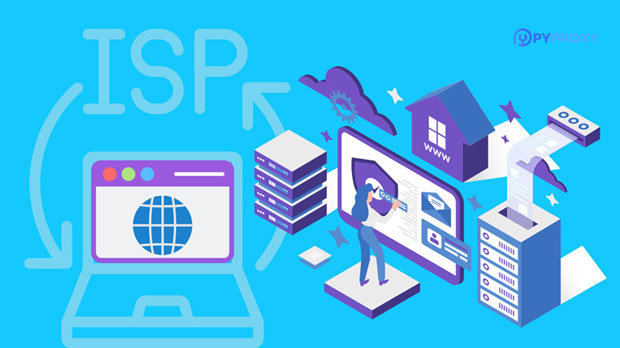ProxyEmpire vs PYProxy, which is better for IP address management?
When it comes to managing IP addresses efficiently, two major players in the proxy industry stand out: ProxyEmpire and PYPROXY. Both services offer unique features and functionalities designed to streamline IP address management, but each excels in different areas. ProxyEmpire is known for its vast network and variety of proxy types, making it a strong contender for users who need diverse options. PYProxy, on the other hand, prides itself on high-speed proxies and a strong commitment to customer service. In this article, we will dive deep into a detailed comparison between ProxyEmpire and PYProxy to determine which is better suited for IP address management needs. Introduction to IP Address ManagementIP address management (IPAM) is the process of planning, managing, and tracking IP address allocations within a network. It is essential for organizations that need to maintain a large-scale network infrastructure, ensuring proper routing, addressing, and access control. Whether you are managing a small team or running a massive enterprise, effective IP address management is vital to avoid network congestion, ensure security, and optimize resource usage.For businesses involved in online scraping, data collection, or accessing region-locked content, using proxies to manage IP addresses is a common solution. Proxies mask the real IP address of users, making it possible to route traffic through different IPs, thereby avoiding detection and restrictions. In this context, ProxyEmpire and PYProxy provide distinct advantages.ProxyEmpire OverviewProxyEmpire is a proxy provider with an expansive pool of IP addresses, making it a popular choice for businesses with diverse IP management needs. One of the main selling points of ProxyEmpire is its range of proxy types. This includes residential, mobile, and datacenter proxies, offering flexibility and customization depending on the task at hand. Additionally, ProxyEmpire’s network is vast, covering multiple regions across the globe. This geographic diversity is particularly beneficial for businesses requiring access to content from different countries.Key Features of ProxyEmpire1. Variety of Proxies: With ProxyEmpire, users can choose from a wide array of proxy types. This is important because different tasks require different types of proxies. For example, scraping websites with advanced security measures may require residential proxies, while less sensitive tasks can benefit from the speed of datacenter proxies.2. Global Reach: The sheer number of locations covered by ProxyEmpire’s proxy network means users can access region-specific content and services. This is ideal for businesses with global clients or for those who need to test services in different geographical areas.3. Rotating Proxies: ProxyEmpire supports rotating proxies, meaning users can automate the switching of IP addresses. This is useful for avoiding IP bans during web scraping or any task that might trigger anti-bot mechanisms.4. Customizable Plans: ProxyEmpire offers flexible subscription plans, allowing users to scale up or down based on their needs. This flexibility makes it suitable for both small startups and large enterprises.PYProxy OverviewPYProxy, on the other hand, is a proxy service that prioritizes speed and stability. While its network may not be as vast as ProxyEmpire’s, it is known for its reliability and customer-focused approach. PYProxy is especially appealing to users who need high-speed proxies for tasks like streaming, gaming, or high-frequency trading.Key Features of PYProxy1. Speed and Stability: PYProxy is renowned for its fast and reliable proxies. The service focuses on providing users with stable, low-latency connections that are ideal for activities that require minimal downtime.2. Customer Support: PYProxy excels in customer service, offering 24/7 support to assist with any technical issues. This can be particularly useful for users who are not as tech-savvy and need prompt assistance.3. Ease of Use: The platform is designed with simplicity in mind, making it easy for users to get started without much prior knowledge. The user interface is intuitive, and setup is straightforward.4. Geographical Variety: While the number of locations is smaller than ProxyEmpire’s, PYProxy still offers a selection of global IPs, providing decent geographical coverage for various use cases.Comparison: ProxyEmpire vs PYProxyNow that we have a clearer understanding of the features offered by ProxyEmpire and PYProxy, it’s time to compare them directly in the context of IP address management.1. Network Size and Coverage: ProxyEmpire stands out with its vast network, offering users a large selection of global proxies. This makes it better suited for businesses that require access to a variety of regions. In contrast, PYProxy offers a more focused network, which may limit users in terms of location options.2. Proxy Variety: ProxyEmpire offers a wider range of proxies, including residential, mobile, and datacenter options. This flexibility makes it a superior choice for businesses with specific proxy needs. PYProxy, while offering fast and stable proxies, does not offer the same variety, which might be a limitation for users with specialized requirements.3. Speed and Performance: PYProxy is the clear winner when it comes to speed. If low-latency connections are essential for your operations, such as for online gaming or real-time data access, PYProxy’s high-performance proxies will be a better fit. ProxyEmpire, while fast, may not always match the level of speed and stability PYProxy offers.4. Customer Support: PYProxy is known for providing exceptional customer support, with 24/7 assistance. For businesses that prioritize customer service, PYProxy’s dedicated support team can be a huge asset. ProxyEmpire also offers support, but it may not be as personalized as PYProxy’s.5. Ease of Use: Both ProxyEmpire and PYProxy offer user-friendly interfaces, but PYProxy has a slight edge in simplicity. For businesses that need a proxy service without the complexity of advanced features, PYProxy might be the better choice.Which One is Better for IP Address Management?The choice between ProxyEmpire and PYProxy ultimately depends on the specific needs of your business. - If you require a broad range of proxies, with geographic flexibility and a variety of proxy types (such as residential or mobile proxies), ProxyEmpire is likely the better option. Its vast network makes it ideal for businesses involved in web scraping, data collection, or accessing content from multiple regions.- On the other hand, if you prioritize speed, reliability, and excellent customer support, PYProxy is the better choice. Its focus on high-performance proxies and customer service makes it ideal for activities that require minimal downtime, such as streaming, gaming, or real-time transactions.In conclusion, both ProxyEmpire and PYProxy offer valuable features for IP address management. Your final decision should be based on the specific needs of your business, including speed, variety, geographic coverage, and customer service. By weighing these factors carefully, you can select the proxy provider that best aligns with your requirements.
2025-02-26

























































